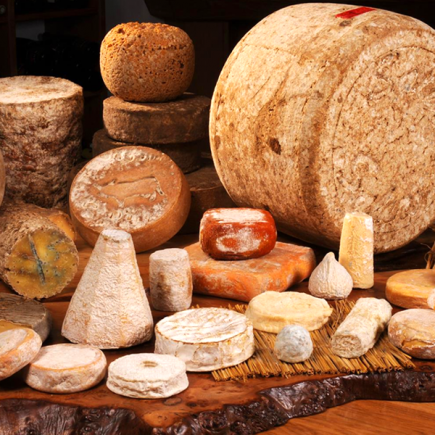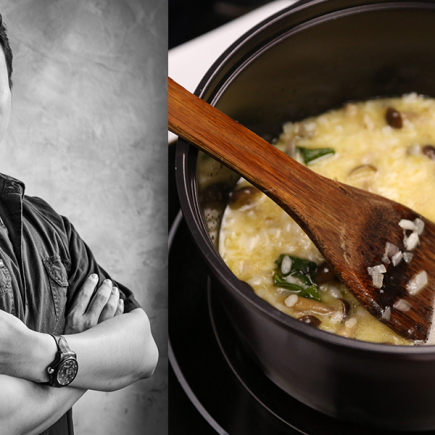
The Cutting-edge of Food Innovation
You can normally tell restaurants apart without a hitch. You’ve got the multi-million dollar chain restaurants, with a fast turnover, consistent quality and a strong brand identity. You’ve got the classical fine-dining restaurants, steeped in centuries of old-school French dining tradition. You’ve got the very fashionable small-plates restaurants, drawing on culinary influences from all over the world to turn out exciting, boundary-pushing food that allows foodies to explore the cutting-edge of gastronomic innovation in a casual, welcoming and fun environment. But restaurants like Noma resists categorisation.
Since it exploded onto the international gastronomic scene by nabbing top spot on the San Pellegrino’s Top 50 Best Restaurants list, making it the de-facto best restaurant in the world, Noma has captured the global culinary imagination with its revolutionary approach to food, prioritising seasonality, locality and innovation. Diners travel to Noma to experience the unfamiliar, whether in the form of challenging ingredients (ants and moss are just two examples) or dazzling culinary techniques both new, and old — the kitchen has experimented with making bog butter, a technique dating all the way back to the 18th century, which involves fermenting butter in a peat bog.
While Noma is being uprooted and transported, staff and all, to Tokyo, Tulum and Sydney, the seat of the fearless experimentation for which it has become known remains in Copenhagen. Led by Head of Culinary Research of Development Ben Reade, the Nordic Food Lab team works tirelessly to unveil new flavours and techniques that just not offer the promise of more delicious food, but also the possibility of more sustainable dining — an undeniably noble pursuit, considering scarcity and overcrowding are at the forefront of the global mind.
The team and its vision

The team at the Nordic Food Lab is defined by its dynamism, with only two full-time staff and a constantly evolving roster of experts in a wide range of fields, from biotech to English literature. The diversity of expertise is what makes working at the Lab such a rewarding experience. Seeing food, arguably a building block of any civilisation and culture, through the lens of a variety of academic fields and cultural backgrounds ensures that the team’s research remains holistic and, more importantly, innovative.
And the collective vision of this group of researchers? “Exploring edible biogeography”, taking locally foraged Scandinavian ingredients as a starting point for exploring the culinary and agricultural technology that may come to define the future of sustainable food.
Better with age
It isn’t just wine that gets better with age. Just ask the Nordic Food Lab team. Drawing on Scandinavian food preservation techniques made necessary by the long, barren winters, the Lab’s projects range from curing and fermenting fish and mummifying deer legs to barrel-aging Quince Balsamic Vinegar for over a decade.
While modern refrigeration techniques mean that food preservation is no longer a matter of survival (notwithstanding that the brutality of Nordic winters remains undiminished), the preservation process imparts more than just longevity. It imparts flavour. One only has to taste a piece of dry-aged beef next to a piece of wet-aged beef to appreciate the difference. The intensity of umami, beefy funk, and the nutty, almost brown-butter notes of the former provide a far more extraordinary flavour experience than the latter. In the Nordic Food Lab, researchers concentrate on distilling the intense flavours associated with fermented foods, then incorporating them into meticulously-planned dishes which balance out the often overwhelming salty, umami or acidic flavours of fermented ingredients for a more refined dining experience.
All of mother nature’s gifts
Noma is known for serving up “challenging” dishes. Ants, tree bark, sea plants and other ingredients that most uninitiated diners would dismiss as inedible, regularly find their way onto this two Michelin-starred menu. But the purpose isn’t just to encourage diners to push their own gastronomic boundaries, or to cynically cut costs for the restaurant, it’s also to demonstrate how many new flavours, and how many new food resources, remain to be discovered if we look beyond our traditional options. And if sustainable eating is to be achieved in future generations, it’s these untapped reserves of delicious ingredients that will need to be harnessed — to farm more chicken, beef or fish is simply not a long-term solution.
In line with this philosophy, Nordic Food Lab is experimenting with a wide variety of unconventional ingredients. Take, for example, insects. Researchers have known for decades that insects are a rich source of protein and vitamins, but ingrained cultural prejudices against the consumption of creepy-crawlies have kept insects far, far away from mainstream gastronomy. The Lab seeks to change that, turning out dishes such as bee larvae ceviche that (once you surmount the psychological and, frankly unfounded, “gross-out” factor) provide a genuinely enlightening and delicious dining experience.
Multi-sensory dining
The notion of multi-sensory dining is not a new one, with Heston Blumenthal’s famous Sound of the Sea dish at The Fat Duck being the best known, and arguably the first mainstream exploration of how sight, sound and smell can affect our taste buds. But plenty remains to be explored in this field, and unsurprisingly, the Nordic Food Lab team is among those leading the charge. Projects which the team is working on include the effect of sounds on texture and mouthfeel (for example, research has shown that the sound of crispy food cracking can make food seem more crispy) and the impact of lighting on flavours (for example, green lighting can often evoke “green” flavours including pears, apples and freshly mown grass).
The future of food
With the proliferation and popularity of food documentaries and televised cooking competitions, the relentless hype surrounding the various “Best Of” lists in the restaurant industry, and the cults of personality that have arisen around the world’s best chefs, fine dining is now squarely in the global spotlight. But while the classic ideals of slick service, tremendous flavours, artful presentation and seasonality do and should continue to be the focus of every restaurant, the work that is being done at Nordic Food Lab is equally deserving of our attention.
The team behind Noma and the Nordic Food Lab have a vision for the future of food. Their objective isn’t just to transform a diner’s experience, but to revitalise the food industry for future generations the world over. And, of course, it doesn’t hurt that as these passionate chefs and researchers continue to discover new culinary techniques, re-discover the many long-forgotten techniques, sample new ingredients and push the boundaries of food psychology as we currently understand it, they’re turning out some pretty delicious plates of food. Foodies, rejoice!

